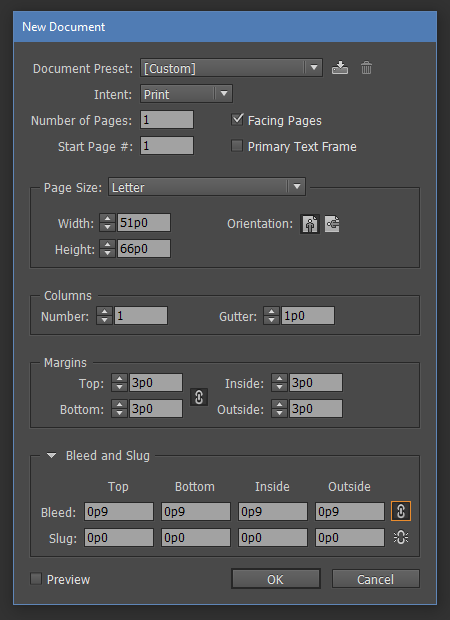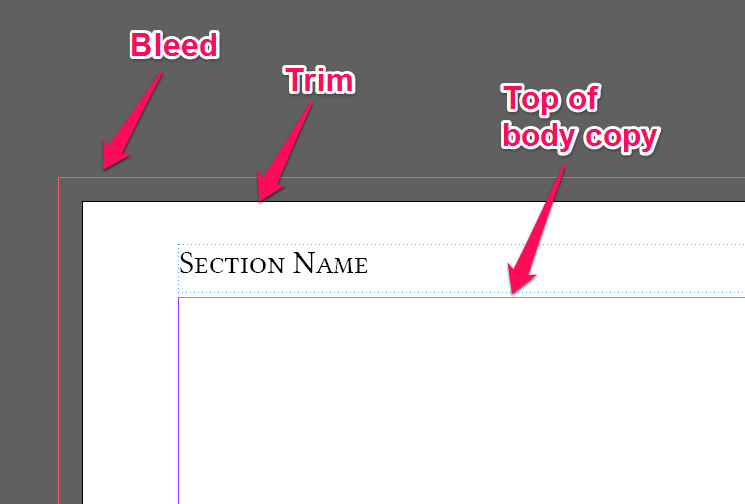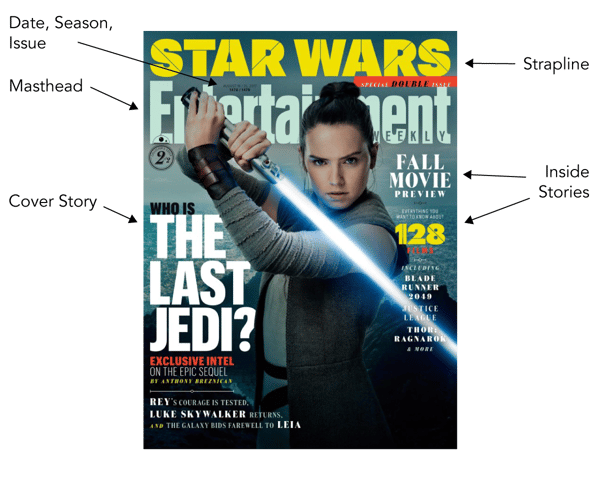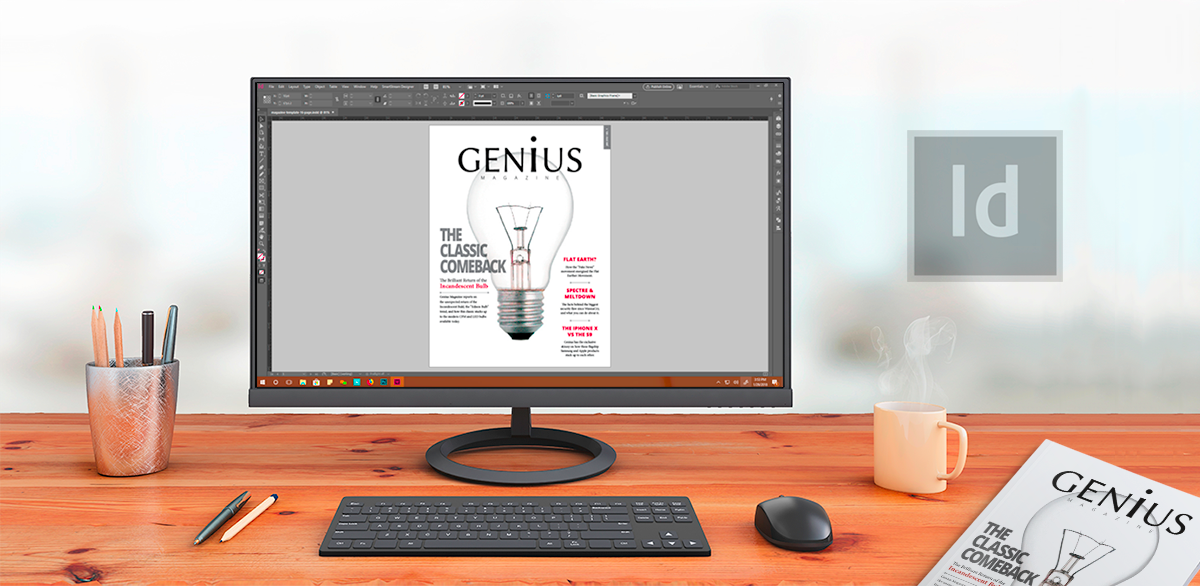Let's face it, magazine design can be time-consuming and expensive. When start-up magazines first open their doors, money is tight, and keeping the budget skinny is important. Although you may not have the in-house staff to completely produce your magazine, understanding the process and being able to do some edits on your own can be a life saver. Even if you do have the in-house staff, it might be a challenge getting properly formatted files to the printer on-time and on-budget.
If this is you, and you have a Creative Cloud subscription (usually starting at about $70/mo for businesses), you can rein in expenses and creative control by building your own template. To help you with this challenge, I've put together this step by step tutorial.
Before we get started, take advantage of the free template download so you can follow along. Or if you would rather have us design a custom template for you, hit the "Talk to an Expert" button.
Step 1: Getting Started

First let's create a new document. You should create the document using the following settings (as shown in the image above):
- Intent: Print
- Facing Pages: Yes
- Page Size: Letter
- Width: 8.5"
- Height: 11"
- Bleed: 0.125"
Leave the rest on their default settings. It's important to add the quote (") at the end of your height and width values, since InDesign defaults to Picas. Your height and width values should be set to 51p0 x 66p0 Picas with a 0p9 bleed.
It's important to properly setup your bleeds, as this allows graphics and colors to be printed right up to the edge of the paper. This is a key graphical technique that adds impact and professionalism to your magazine.
Step 2: Building Your Master Pages
One powerful feature of InDesign is the ability to setup Master Pages. Think of it as a set of templates that we use to build pages throughout the book. You can build them for any layout you need, and InDesign will let you use them with the click of the mouse. Setting up your Master Pages now will make it easier next time you create a book in InDesign.
We'll keep it simple here and create the following Master Page elements:- Header
- Text Box
- Page number
Double-click "A-Master" in the Pages palette (F12) to enter the Master Page editor. Once there, follow the steps outlined below:
Build your header:

- Use the Type Tool (T) to draw a text frame that spans the top of the page's margin area (the purple box). Make it approximately ¼ inch in height.
- Do the same thing for the facing page on the Master Page template.
- On the left-hand page, add the text "Section Name."
- On the right-hand page, add the text "Section Name." Set the text to align right.
Try to keep enough clearance above the top of the body copy that the header doesn't crowd into it while keeping it safely away from the trim area.
Note that some magazines don't use a page header, and it's totally fine to leave it out. You can even have it on one side only, or maybe use a small image. Get creative! Creativity is what magazines are all about.
Build your footer:
- Use the Type Tool (T) to draw a text frame that spans the bottom of the page's margin area. Make it approximately ¼ inch in height.
- Click inside the text frame. Now choose Type > Insert Special Character > Markers > Current Page Number. You can also use the hot key Ctrl+Alt+Shift+N (Command+Alt_Shift+N on a Mac). You should see an upper-case A appear (it can also be a B,C, etc depending upon the Master Page prefix) . This will be your page number when you use this Master Page on actual pages.
- Center the page number you created in Step 2.
- Duplicate steps 1-3 for the facing page in the Master Page template.
You can also put other information down here, such as the brand name, website, issue date, etc.
Build your text area:
- Now that you have your headers and footers setup, let's create our main text area. Use the Type Tool (T) to draw a text frame between the header and footer. Make it approximately 8 ¾ inches in height on both pages.
Step 3: Create Your Paragraph Styles
Now that we have our Document and Master Pages setup, we can start thinking about our type styles. This is a very important choice. Your decision here will affect your reader's ability to understand your content. We won't go too deep into Paragraph Styles here. If you want to learn more about how to build and use them, check out this page.
Here are some common Paragraph Styles you might need in a Magazine:
Body Type
Body Type You should always start with your body type. Since more than 80-90% of your magazine will use this style, so it should be your top concern. Use a font that is ledgible in large blocks of small type. Be sure to give it a little breathing room to make it easier on your reader's eyes. Keep in mind your audience age, interests, and the brand persona you're trying to communicate.
Headers
You'll need at least one type of header. This could be a chapter header, section header and a sub-header. Because there is very little type using these styles, it's OK to get a bit more creative with headers.
Page Headers and Footers
It's not a bad idea to make a Paragraph Style for the page headers and footers we created in Step 2. A smaller, italicized version of our Body Type would work here.
Step 4: Make a Cover
They say you can't judge a book by it's cover, but when it comes to someone picking up your magazine, that is exactly what they do. It's important to create an engaging, eye-catching cover that communicates what the magazine is about, and what readers can expect to find inside.

Step 5: Wrapping Up
Now that we have our template setup, all that's left to do is to add content! There are several ways to do this. Try to figure out what works best for you and your workflow.
- Compose your articles directly in InDesign. This workflow lets you take advantage of InDesign's built-in paragraph styles and text tools natively, allow you to "see" what the article will look like, and how it will fit into the magazine immediately.
- Compose articles in your favorite word editor. This has the advantage of allowing you to work in a comfortable software environment and helps expedite collaboration with other content authors. The resulting Word, Google Doc, RTF or ODT file can then be copied/pasted into your InDesign document or linked directly (DOC, RTF or TXT only).
When you're ready to go, you can export your book as a print-ready PDF file directly from InDesign by choosing File > Adobe PDF Presets > [Press Quality]... or by using the job options supplied by your print provider.
That's It!



